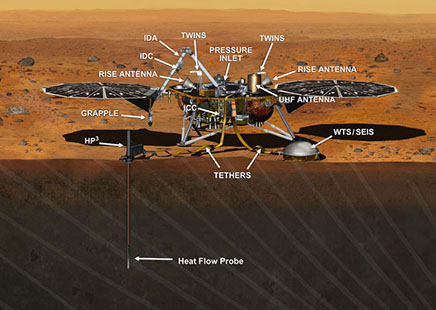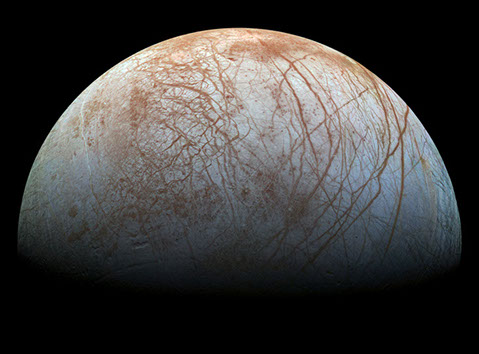










Angela G Marusiak • Geology Department University of Maryland - College Park • marusiak@umd.edu
My research can be divided between a focus on Mars and the icy moon, Europa.
Mars:
In 2018 NASA plans to send seismometers to Mars aboard the InSight (INterior Exploration using Seismic Investigations, Geodesy, and Heat Transport) mission. As part of mission preparations, I'm using terrestrial events to test the quantity and quality of events that would be required to constrain the depth to the Martian Core. I created 22 models based on the PREM model with core depths between 2791-2991km in increments of 10km. I randomly select terrestrial events and stack their amplitudes at each model's expected time of arrival. The difference between actual and predicted arrival times are also compared. Using this method, I'm able to test how many events are required to constrain the core depth. I have also tested how the quality of events affects core depth uncertainty. Location uncertainty was also added to quantify its affect on my algorithm. We further tested how ScS multiples could be used to increase the number of stacks in our analysis. Preliminary results can be viewed in the LPSC abstracts, (Marusiak et al., 2016) and (Marusiak et al., 2017). A paper with full results has been published in Icarus.

Image Credit: JPL/NASA
Icy Moons:
Europa and Enceladus are two icy moons that have subsurface oceans beneath their exterior icy shells. Because of the potential habitability of these oceans, NASA has made studying these moons a priority. Specific interests include determining the seismicity of the icy shells and the structure of the ice shells and oceans.
The Seismometer to Investigate Ice and Ocean Structure (SIIOS) team was funded through a NASA PSTAR grant to study the science capabilities of flight-ready instruments. We use Gulkana Glacier in Alaska, and a site in Northwest Greenland as analog sites to test the instruments. Our goals include 1) comparing the flight-ready instrument (Silicon Audio) to traditional instruments 2) compare ground-based instrumentation to deck-mounted instrumentation, 3) compare capabilities of a single-station to a small-aperture array. For more information on the SIIOS team see their webpage, Facebook and Twitter .
My part of the project focuses on 1) using the active source experiment to determine the local structure of the ice 2) develop a location algorithm and test the uncertainty in location using the active source experiment and regional passive events 3) build a catalog of passive events to quantify a small-aperture array's ability to detect events 4) extrapolate the results to Europa to determine the science capabilities of a small-aperture and single-station seismometer for the exploration of icy worlds. My portion of the work will also be partially funded by the NASA Earth and Space Science Fellowship (NESSF).
Preliminary results were presented at AGU in 2017 and 2018, 2019 at LPSC in 2018 and 2019 (a,b) and at SSA in 2019. A paper which describes the data collected at our Gulkana, Glacier field site has been accepted in now available with SRL.

Image Credit: JPL/NASA